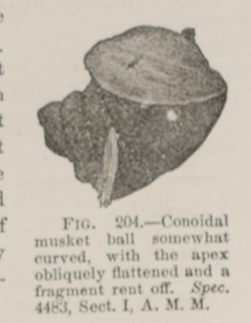Title: N——, W.
Source text: Surgeon General Joseph K. Barnes, United States Army, The Medical and Surgical History of the War of the Rebellion. (1861–65.), Part 1, Volume 2 (Washington, D.C.: Government Printing Office, 1870), 451.
Civil War Washington ID: med.d1e18954
TEI/XML: med.d1e18954.xml
CASE.—Corporal W. N——, Co. C, 142d Pennsylvania Volunteers, having been wounded at Fredericksburg, December 13th, was admitted to hospital at Alexandria, December 19th, 1862. A ball had entered one inch and a half above the outer third of the right clavicle and lodged. The patient was weak, and had an anxious countenance; there was considerable dyspnœa, with a full but weak pulse, and suppuration from the wound was profuse. On December 23d, diarrhœa set in, attended with anorexia; otherwise the condition of the patient remained unchanged. The diarrhœa became worse by the 28th, and dyspnœa increased, the breath passing through the wound. The patient died on December 31st, 1862, with very great dyspnœa. At the autopsy, it was found that the ball had passed longitudinally through the inferior lobe of the right lung, impinged upon the body of one of the dorsal vertebræ, a splinter of which still adheres to the ball, and lodged under the greater curvature of the stomach. There was red hepitization of the injured lung, and a little pus was found in the thorax. There was nothing to indicate the occurrence of hæmorrhage. The treatment of this case was expectant. The missile was contributed to the Army Medical Museum, with the foregoing account, by Acting Assistant Surgeon G. F. French. It is represented in the adjoining cut (FIG. 204.)
